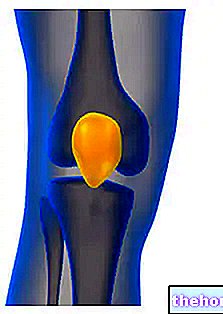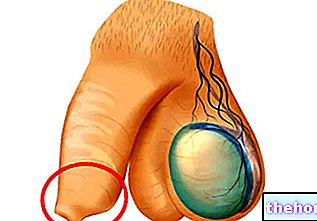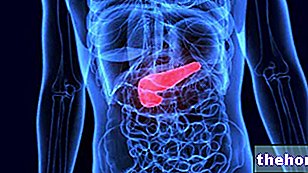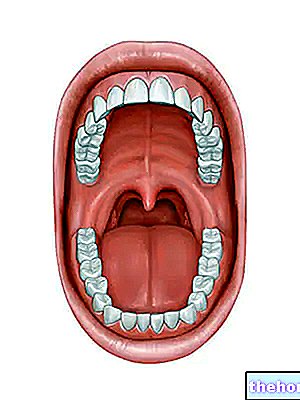Generality
The phrenic nerve is the bilateral mixed nerve, which is responsible for innervating the diaphragm muscle.
The diaphragm is the breathing muscle par excellence.
The phrenic nerve originates at the level of the neck, from the anterior branches of the spinal roots C3, C4 and C5. Then, going downwards (to be precise towards the diaphragm), it passes in the vicinity of the subclavian artery, the subclavian vein, the lungs and the heart.
The course of the phrenic nerve in the right half of the human body is slightly different from the course of the left phrenic nerve.
The phrenic nerve can be involved in a medical condition known as diaphragmatic paralysis.

Phrenic nerve and its branches. Image from teachmeanatomy.info website
Brief review of what "is a nerve
To fully understand what a nerve is, it is necessary to start from the concept of a neuron.
Neurons represent the functional units of the nervous system. Their task is to generate, exchange and transmit all those (nerve) signals that allow muscle movement, sensory perceptions, reflex responses, etc.
Typically, a neuron consists of three parts:
- The so-called body, where the cell nucleus resides.
- Dendrites, which are equivalent to antennas for receiving nerve signals from other neurons or from receptors located in the periphery.
- The axons, which are cellular extensions having the function of spreading the nerve signal. The axon covered with myelin (myelin sheath) is also called the nerve fiber.
A bundle of axons makes up a nerve.
Nerves can carry information in three ways:
- From the central nervous system (CNS) to the periphery. Nerves with this property are called efferents. The efferent nerves control the movement of muscles, so they are at the head of the motor sphere.
- From the periphery to the SNC. Nerves with this ability are called afferents. The afferent nerves signal to the CNS what they have detected in the periphery, therefore they cover a sensory (or sensory) function.
- From the SNC to the periphery and vice versa. Nerves with this double capacity are called mixed. Mixed nerves perform a double function: motor and sensory.
What is the phrenic nerve?
The phrenic nerve is the bilateral mixed nerve which, among its various functions, has the important task of innervating the diaphragm muscle.
The bundles of axons that compose it derive, in part, from the brachial plexus and, in part, from the cervical plexus. The brachial plexus and the cervical plexus are two important reticular formations of spinal nerves, having the function of innervating, respectively, the upper limbs (from the shoulder to the hand) and the neck-trunk section.
In anatomical language, the term "even" indicates that a given element - be it a bone, a blood vessel or a nervous structure - is present on both the right and left halves of the human body.
DIAPHRAGM: POSITION AND FUNCTION
The diaphragm is that muscle, laminar in shape, which resides on the lower edge of the rib cage and separates the thoracic cavity from the abdominal cavity.
In addition to keeping the organs of the chest separate from the organs of the abdomen, this particular laminar muscle plays a fundamental role during the breathing process:
- In the inhalation phase, he contracts, pushing the abdominal organs down and causing the ribs closest to him to rise. This expands the volume of the chest cavity and allows the lungs to take in the necessary air.
- In the exhalation phase, it is released, allowing the abdominal organs to rise again (N.B: this also happens thanks to the support of the abdominal muscles) and the lower ribs to return to their normal position.
In this phase, the chest volume is noticeably reduced.
Anatomy
Each phrenic nerve arises primarily from the anterior branch of the fourth cervical spinal root (C4 root) and, to a lesser extent, from the anterior branches of the third and fifth spinal root (C3 root and C5 root).

The anterior branches of the C3 and C4 roots belong to the cervical plexus, while the anterior branch of the C5 root is part of the brachial plexus.
Returning to the phrenic nerve, the latter begins its course in the neck, exactly on the lateral edge of the anterior scalene muscle. below the so-called prevertebral membrane (or fascia).
At this point, the course of the left phrenic nerve and the course of the right phrenic nerve vary with respect to each other. Indeed:
- The left phrenic nerve it passes, anteriorly, to the first tract of the subclavian artery and to the brachiocephalic artery and, posteriorly, to the subclavian vein. Then, it enters the thorax through the so-called upper thoracic opening, crosses the aortic arch and the vagus nerve and continues in the direction of the diaphragm, passing over the apex of the left lung and passing the upper portion of the pericardium enveloping the left ventricle.
The left phrenic nerve path ends on the left half of the diaphragm. - The right phrenic nerve it leads anteriorly to the second tract of the subclavian artery and posteriorly to the subclavian vein. Then, it enters the thorax, through the upper thoracic opening, and continues in the direction of the diaphragm, passing over the apex of the right lung and crossing the upper portion of pericardium enveloping the right atrium.
The course of the right phrenic nerve ends at the level of the right half of the diaphragm.
BRANCHE OF THE BRAKE NERVE
At the end of its path, both the left phrenic nerve and the right phrenic nerve give rise to three main branches, called very simply: anterior branch, lateral branch and posterior branch.
VASCULARIZATION
The supply of oxygen-rich blood to the phrenic nerve depends on the pericardiophrenic artery. The pericardiophrenic artery is a branch of the internal thoracic artery.
CHANGES
In some individuals, the origin or course of the phrenic nerve may vary from the above picture. For example, it is possible that:
- the right phrenic nerve and / or the left phrenic nerve run anterior to the subclavian vein;
- The phrenic nerve descends towards the thorax, remaining on the lateral border of the anterior scalene muscle;
- The scalene nerve perforates the anterior scalene muscle;
- The phrenic nerve has an accessory nerve, called the accessory phrenic nerve. Generally, the accessory phrenic nerve descends posteriorly to the subclavian vein and joins the phrenic nerve approximately at the level of the thorax;
Furthermore, it is also possible that:
- The phrenic nerve receives further nerve branches from the brachial or cephalic plexus;
- The phrenic nerve sends some branches to innervate the subclavian muscle.
Function
The phrenic nerve includes bundles of axons with motor functions and bundles of axons with sensory functions. After all, it is a mixed nerve.
MOTOR FUNCTIONS OF THE BRAKE NERVE
As already stated, the phrenic nerve is responsible for motor control of the diaphragm, which is the main muscle of breathing.
Therefore, adequate and efficient breathing depends on the correct functioning of the phrenic nerve.
SENSITIVE FUNCTIONS OF THE FRENIC NERVE
Through its sensory axons, the phrenic nerve innervates the mediastinal pleura, the central part of the diaphragmatic pleura, the central part of the diaphragmatic peritoneum and the pericardium. It should be remembered that the nerves with sensory functions transmit information from the periphery - therefore from the areas just mentioned - to the central nervous system.
Clinic and pathologies
The phrenic nerve can be the victim of inflammation or damage.
Inflammation of the phrenic nerve is responsible for episodes of hiccups, while damage to it can lead to a medical condition known as diaphragmatic paralysis.
HICCUP
Hiccups are an unexpected, involuntary and spasmodic contraction of the diaphragm, which is expressed in an "inspiration followed by" sudden and noisy closing of the glottis.
Causes that can inflame the phrenic nerve and subsequently cause hiccups include:
- The presence of a tumor or a cyst on the neck, which determine a phenomenon of compression on the phrenic nerve;
- A condition of goiter such that there is a phenomenon of compression on the phrenic nerve;
- The presence of gastroesophageal reflux;
- The presence of a severe sore throat (pharyngitis) or severe laryngitis.
DIAPHRAGMATIC PARALYSIS
Damage to the phrenic nerve, leading to diaphragmatic paralysis, can be the consequence of:
- A mechanical trauma, occurring for example during a surgical procedure;
- A compression, for example due to the presence of a tumor in the thoracic cavity;
- A myopathy, resulting for example from a condition of myasthenia gravis;
- A neuropathy, resulting for example from a condition of diabetes (diabetic neuropathy).
Diaphragmatic paralysis is responsible for a paradoxical movement on the part of the diaphragm. In other words, the diaphragm rises, during inhalation, and lowers, during exhalation (ie it does the opposite of what it usually does).
Treatment of diaphragmatic paralysis involves causal therapy (thus a remedy for what damages the phrenic nerve) and symptomatic therapy.









.jpg)


















